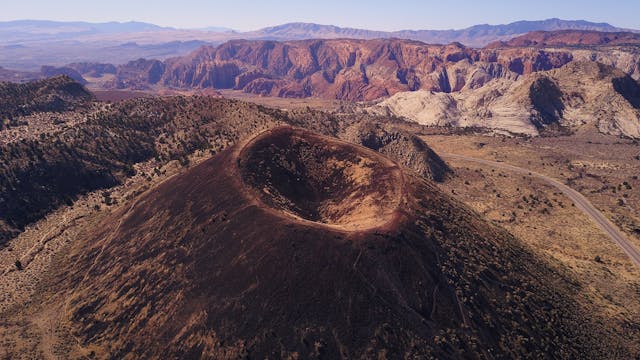
Why do volcanoes become dormant? Volcanoes become dormant because the magma in the Earth’s mantle can no longer reach the volcano.
There are roughly 1,500 active volcanoes on Earth at the moment and 70 of them erupt every year. Most of those eruptions are small, but some are much bigger and have more of an impact on our lives. Within recorded history, there have been several large eruptions. The eruption of Mount Tambora in 1815 was large enough that it altered the climate around the globe and had far reaching consequences. There were many even larger eruptions that happened before people were here. The largest eruption ever is disputed but is thought to be the eruption of the Parana and Etendeka traps. This would have happened 132 million years ago and would have released 8,600 km3 of matter. For comparison, the Mt Tamobora eruption that altered global climate, released about 45 km3 of matter. There are several supervolcanoes that still exist and could potentially end life on Earth. The Yellowstone supervolcano is one of them and it could wipe out most of North America and cause a nuclear winter that we might not survive.
Volcanoes almost always form on the edge of tectonic plates. There are some volcanoes that form in the middle of plates, but these are less common. Tectonic plates sit atop the mantle, which is a 2,900 km thick layer of soft rock. They are not liquid, but superheated by the heat and pressure of the Earth until they are very hot and soft. This mantle provides the lubrication that the tectonic plates need to move. There are three ways that tectonic plates move relative to each other. They can move sideways (transform boundaries), they can be forced up or down by another plate (destructive boundaries), or they can move apart (constructive boundaries). Volcanoes form when the magma is exposed to water. This happens at destructive and constructive boundaries, but it doesn’t happen at transform boundaries.
In destructive boundaries, one plate is pushed up and the other plate is pushed down. As the plate goes down into the magma, it takes water bearing rocks with it. When this water gets into the mantle it evaporates and raises the temperature of the magma. That makes the magma lighter than the magma around it and it rises up, forming a magma chamber. As more and more magma is added, the pressure increases and pushes the ground up, creating the volcano shape. When the pressure reaches the point where it can’t be contained, the volcano erupts.
In constructive boundaries, the plates pull apart creating a space that the magma rises up to fill. When the magma reaches the surface, it hardens and makes more land. This is most common at the bottom of the oceans.
The volcanoes that form in the middle of tectonic plates are called hot-spot volcanoes. These happen when a thin column of magma rises up and the heat melts the ground above it, thinning it. Then a volcano can form and erupt.
So, why do volcanoes become dormant? Simply speaking they go dormant because the tectonic plate moves and cuts them off from the source of the magma. The build up of magma tends to stay in the same place in the Earth, but the tectonic plates move and when they move, they take the volcanoes with them. A volcano that forms over a pocket of magma, will slowly move away with the plate it is sitting on. This can actually be seen in Hawaii. Millions of years ago, the first volcano in Hawaii formed and the released magma hardened and became one of the islands. Incidentally, the volcano that formed the Hawaiian Islands was a hot-spot volcano because it is right in the middle of the Pacific plate. The tectonic plate is moving to the northwest and as it moves it takes the volcano with it. However, the magma chamber stays where it is and as the volcano moves too far away from the magma chamber it becomes dormant and a new volcano forms. This is why the Hawaiian island chain go from the southeast to the northwest.
Dormant means sleeping and not dead, which means that dormant volcanoes can become active again. It is not that common, but it is possible. When the volcano moves away from the source of the magma, it takes an empty magma chamber with it. It is possible that another source of magma can find its way into that chamber and reignite the volcano. And this is what I learned today.
Photo by Anna Galimova : https://www.pexels.com/photo/aerial-view-of-dormant-volcano-crater-9193569/
Sources
https://en.wikipedia.org/wiki/Paran%C3%A1_and_Etendeka_traps
https://en.wikipedia.org/wiki/List_of_largest_volcanic_eruptions
https://volcano.oregonstate.edu/faq/why-do-volcanoes-become-dormant
https://www.amnh.org/explore/ology/earth/power-of-plate-tectonics/volcanoes
https://education.nationalgeographic.org/resource/mantle
https://science.howstuffworks.com/nature/natural-disasters/volcano6.htm
